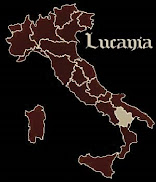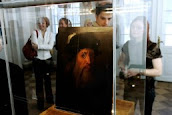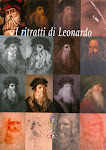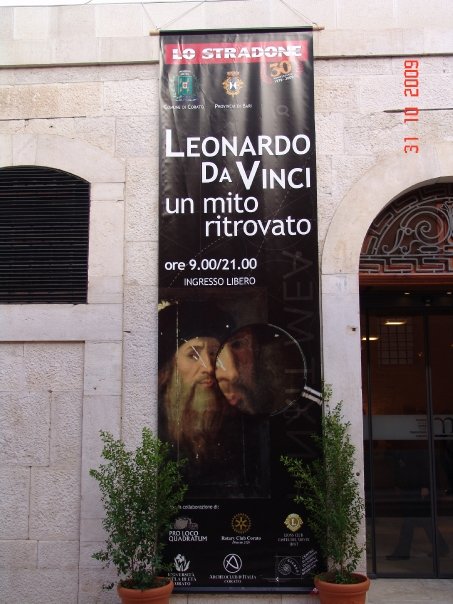Enclosed with the letter of comparative intent, analysis was performed on a wooden slab likely representing Leonardo da Vinci, and bearing on the back this writing:“pinxit mea,” moreover recently recovered in Lucania during the course of reference. The scientific analysis has carried out initial steps, preliminary sketchings to supply information on the dating and the origin of the painting. The first inquiries were carried out by the CIRCE lab (Center for Isotopic Research on Cultural and Enviromental Heritage) in Caserta Italy and the laboratories of the University Suor Orsola Benincasa of Naples, in care of researchers from the Department of Science Ambientali of the Second University of Naples and the laboratory of Science and Technology applied to the cultural assets of the University Suor Orsola Benincasa. Both groups make up the head of the Regional Center of mastery for the development and movement of the innovation applied at the Beni Culturali e Ambientali (INNOVA). Up to now analysis carried out XRF (fluorescence x-rays) on varied points of the pictorial layer and dating with a Radiocarbon method of spectrometry of mass with accelerator on micro-fragments of wood withdrawn from the back of the panel. The preliminary results are of extreme scientific interest. In particular, the hypersensitive measurement of the isotopic relation 14C/12C was carried out on three fragments belonging to the central panels and the exterior panel of the painting. Each of the fragments was submitted to chemical attack to eliminate the carbon from the protective layer and for a rate of each, the cellulose was extracted. The six resulting samples emphasized age, radiocarbonic coinciding between them is within the experimental uncertainties , and the probability that the age having been appraised, makes it fall into the second half of the XV century. The outcome encourages a systematic inquiry PLURITEMATICA on the painting of a spacious analytic specter of methodologies that had been entrusted by CRDC INNOVA.
Allegato alla lettera di intenti relativa ad analisi da eseguire sulla pala su legno rappresentante presumibilmente Leonardo da Vinci, recante la scritta sul retro “pinxit mea”, di recente rinvenuta in Lucania ed in corso di attribuzione
Sono state effettuate analisi scientifiche preliminari tendenti a fornire informazioni sulla datazione e la provenienza del dipinto. Le prime indagini sono state effettuate presso il Laboratorio CIRCE (Center for Isotopic Research on Cultural and Environmental heritage) di Caserta ed i laboratori dell’Università Suor Orsola Benincasa di Napoli, a cura di ricercatori del Dipartimento di Scienze Ambientali della Seconda Università di Napoli e del laboratorio di Scienze e tecniche applicate ai beni culturali dell’Università Suor Orsola Benincasa. Entrambi i gruppi fanno capo al Centro Regionale di Competenza per lo Sviluppo ed il Trasferimento dell’Innovazione applicata ai Beni Culturali e Ambientali (INNOVA). Sono state finora effettuate analisi XRF (X-ray Fluorescence) su vari punti dello strato pittorico e datazioni con il metodo del Radiocarbonio con Spettrometria di Massa con Acceleratore su micro-frammenti di legno prelevati dal retro della tavola. I risultati preliminari sono di estremo interesse scientifico. In particolare, la misura ultrasensibile del rapporto isotopico 14C/12C è stata effettuata su tre frammenti appartenenti alle tavole centrali ed alla tavola periferica del dipinto. Ciascuno dei frammenti è stato sottoposto ad attacchi chimici per eliminare il carbonio dello strato protettivo e, per un’aliquota di ciascuno di essi, è stata estratta la cellulosa. I sei campioni risultanti hanno evidenziato età radiocarboniche coincidenti tra esse entro le incertezze sperimentali, ed è stata valutata la probabilità che l’età del reperto sia contenuta nella seconda metà del XV secolo. Il risultato incoraggia una indagine pluritematica sistematica sul dipinto mediante un ampio spettro di metodologie analitiche che è stata affidata al CRdC INNOVA.
The resulting evidence found regarding the dating of the Leonardo da Vinci painting will be confirmed on the 17th of March, on St. Patrick’s day (the protector of Ireland). Let’s get ready because if they confirm it from the 1500s, a worldwide scoop is bound to arise!
E' in corso uno studio tecnico-scientifico del dipinto da parte di specialisti di grande prestigio nel settore del restauro. I primi risultati saranno resi noti il 17 Marzo, giorno di San Patrizio protettore dell'Irlanda. Se i programmi verranno rispettati, i risultati saranno presentati in una conferenza stampa che si terrà a Roma il 23 Marzo. Non ci resta che aspettare per sapere se il volto di Leonardo ha finalmente deciso di mostrarsi nuovamente dopo 500 anni di oblio.
Wednesday, 13 May 2009
A Letter by Professor Terrasi
Subscribe to:
Post Comments (Atom)
Nicola Barbartelli
"Nicola Barbatelli, Medieval historian, Fr. Comm. Academic Constantinian, historian and researcher of the O.S.M.T.J.,personal advisor to the grand master of the order, SE. Fr. Alberto Zampolli, was studying the art collection of a family with Lucanian origins in the Basilicata region in 2008. The portrait was hidden beneath another painting and was very deteriorated and scratched much different than you see it now. During the first process of cleaning and removal of paint, the figure of this particular subject appeared. A Carbon 14 analysis was done on the wood supporting the canvas and dated the material to the late 15th or early 16th century; a time when Leonardo was still alive. But experts stress the age of the wood doesn't necessarily mean the portrait was painted at that time. Da Vinci fans say that it could have been a work of Da Vinci himself as the back of the canvas carries the Latin words "PINXIT MEA" written in reverse--meaning "painted by myself" which is one of the artist's established trademarks. The name of the artist who painted the image is still being investigated, but experts did rule out that it is was a Leonardo da Vinci self-portrait."













No comments:
Post a Comment